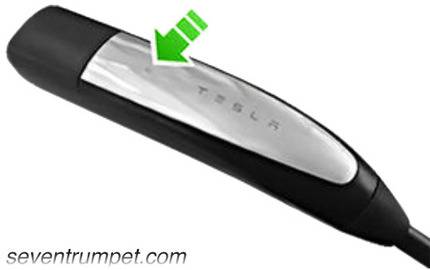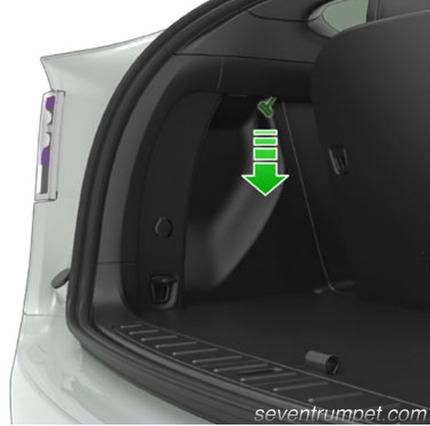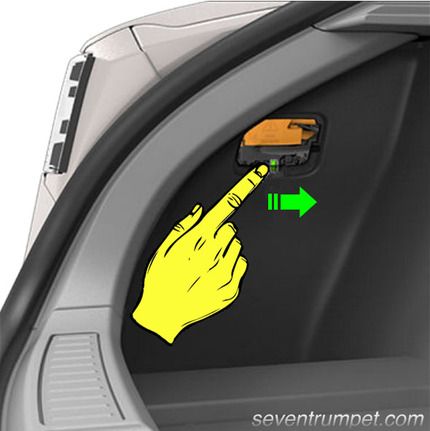How To Remove Charging Cable From Tesla Car (Model S 3 X Y)
Last Updated on July 2, 2022 by Nick
Tesla, Inc. is a company that specializes in electric cars, and engine components, and also manufactures battery charging devices. Currently, the cars produced by Tesla are the Model S, Model 3, and Model X, and the most recent the Model Y. Today I will teach you how to remove the charging cable in this Tesla Model S/3/X/Y.
The electric car charging mechanism is actually not much different from a device, you just need to plug the charger cable into the socket provided. Are you here because you have problems removing the charger on the Tesla car? If so then you are on the right site! So let me teach you right now.
Table of Contents
Removing Charging Cable From Tesla Model S/3/X/Y
Time needed: 1 minute
Many people are frustrated because they can’t pull out the charging cable on this car. Relax! Because this is very easy to do. Here’s how to do it:
- Make sure your vehicle is UNLOCKED
You can unlock the vehicle by opening a door, using a key, or touching Stop Charging on the touchscreen
- Hold down the button on a charger handle to release the latch
The indicator light will change color to light blue, which means that the charger is ready to be removed

- Pull the charger handle from the charge port
If you are using an adapter, be sure to pull the handle and adapter out at the same time
What if the charger adapter is stuck?
Oh, my God! My charger adapter is stuck and can’t get out of the port! What should I do? The first thing you should do if you have a problem like this is to stay calm and follow these instructions:
For Model 3, X, and Y
- Make sure the car is not actively charging. If necessary, tap Stop Charging on the touchscreen
- Open the trunk door
- Find the charge port’s release cable
- Pull the cable down while pulling the charging adapter from the charging port
For Model S
- Make sure the car is not actively charging
- Open the trunk door
- Open the flap on the left-hand side of the trunk side trim
- Find and then hold down the charge port’s manual release lever to the right to release the latch
- Pull the charging adapter from the charging port
What type of charging plug does Tesla use?
A Tesla charging cable is one of the essential accessories that you can purchase for your electric vehicle. The cable connects your Tesla to charging stations that use Type 2 plugs. It is also lighter and easier to use than other cables. Made in Germany, the cable is flexible even in cold temperatures. It’s also universal, meaning it will work with any electric vehicle. Make sure to select the cable that has the same plug type as your car.
If you’re concerned about length, you can purchase a Tesla 30-foot charging extension cable to reach locations up to 50 feet away. It comes with four UL-certified charging adapters and is compatible with virtually all power sources. This cable usually ships the next business day. The company also ships internationally, in North America. You can also buy the cable with the 16A plug for a lighter weight. If you need more power, you can also order the 32A cable, which has a 23-foot cable.
While it’s a nifty addition to your Tesla, the mobile charging adapter isn’t included with the car. Instead, you can purchase it separately for around $400. You can also buy a cable with the Gen 2 plug, which will be necessary if you want to charge your car at home. It’s important to note that these adapters are not standard. It would help if you considered getting a USB charging cable for your Tesla from home. If you purchase this cable, ask the retailer about the compatibility of the plug type.
FAQ – Tesla Charging Cable
We suggest plugging in at least once every evening to maintain a full charge.
With a NEMA 5-15 adaptor, you can power a 120-volt appliance from a NEMA 5-15 outlet. Depending on the vehicle, this may range from two to four miles per hour of charging. We suggest installing a Wall Connector to get the most out of your home charging.
Direct current (DC) power of up to 120 kilowatts (kilowatts) may be supplied by a supercharger to the battery. Transformers and utility connections are required for this kind of power, which are not often accessible in residential settings.
So that’s pretty much it. These instructions are based on the Tesla owner’s manual. This procedure should apply to all models of the Tesla car (2012, 2013, 2014, 2015, 2016, 2017, 2018, 2019, 2020, 2021, 2022, and 2023 model years). Thanks for stopping by and have a good day.


Thank you!
Very helpful with clear and concise information which I could not find readily on the manual
are some superchargers faster and more powerful ?